The 1960s and ’70s were pivotal decades in UK jewelry history, as avid collector Mary Ann Wingfield documents in a new book.
Mary Ann Wingfield is a serious collector of what she describes as “wearable art” made in the 1960s and ’70s, and her new book, Modern British Jewellery Designers 1960-1980: A Collector’s Guide, is an ode to an extraordinary period in British jewelry history. Wingfield begins the book by offering advice on collecting in general, then segues into the jewelry era that’s near and dear to her. The lavishly illustrated tome presents biographies of 25 leading British jewelers from that period, along with photos of their iconic jewels, highlights of their backgrounds and education, techniques they used and often pioneered, and the places their pieces can be seen. This makes it an essential reference for both collectors and aficionados of 20th-century jewelry alike. She includes personal anecdotes about the jewelry she has added to her collection and about meetings with featured designers whose work she owns. The result is a beautiful time capsule in words and pictures.

Setting the stage
Emerging from the post-war years, 1960s Britain became the perfect place to nurture new and creative thinking in jewelry design. A confluence of two economic events helped things along, says Wingfield. In 1960, Britain’s purchase tax on the wholesale value of luxury goods sold in the UK had dropped to a more affordable 25% for the highest level of goods. And in 1961, gold was pegged at just $35 an ounce. Coinciding with these two developments was a third event, one intrinsically linked to jewelry: The International Exhibition of Modern Jewellery 1890-1961. Organized by Graham Hughes — art director of the Worshipful Company of Goldsmiths — in association with the Victoria and Albert Museum, London, its purpose was not only to encourage jewelers “to push boundaries in design,” according to Wingfield, but to revitalize the independent jewelry-making industry. The exhibition took place at the Goldsmiths’ Hall in 1961 and included 901 jewels from 33 countries. As a result of this exposure and other efforts by Hughes to champion British designers abroad, the modern jewelry era got a creative kick-start.
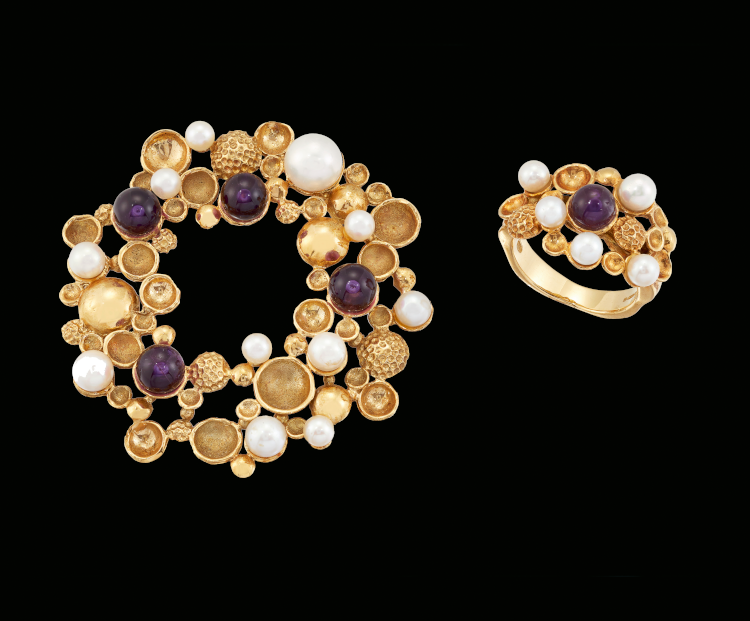
Style stars
The trailblazing independent jewelers made their voices heard, forging their own paths. The results, as the book illustrates, were incredibly inventive. Wingfield points to “outstanding star” Andrew Grima, who won many accolades, including 13 De Beers Diamonds International Awards, the Duke of Edinburgh’s Prize for Elegant Design, and the Queen’s Award for Export Achievement 1966. She also lists John Donald, David Thomas, Alan Gard and Gerda Flöckinger as names of interest in 20th-century jewelry. Hans Georg Mautner, Gillian Packard and Rod Edwards are other exhibitors she highlights from the 1961 exhibition. Wingfield describes the 1960s as a decade of experimenting with gold. She highlights the work of Grima, who “brought textured surfaces to ring shanks and brooches, fused gold to gold to produce gritty surfaces, and drizzled molten yellow gold over stones.” Then there were Flöckinger’s “bold experiments with fused metals, silver and gold,” and the introduction of Donald’s “gold striated cubes and nugget flakes.” Leo de Vroomen, meanwhile, revitalized “the art of repoussé, a technique used to create flowing sculptural forms.” The era also featured the use of rough natural stones rather than polished, and colored gems including fire opals and tourmalines. The 1970s, Wingfield says, was a time when designers experimented with stones in unusual cuts. It was also a popular period for “faux pearl necklaces typically worn as long strands, in layers or as a choker.” Necklaces by Charles de Temple featured pearls wrapped in 18-karat gold. Also in vogue were cuffs, bangles and bracelets — “the larger, the better.”
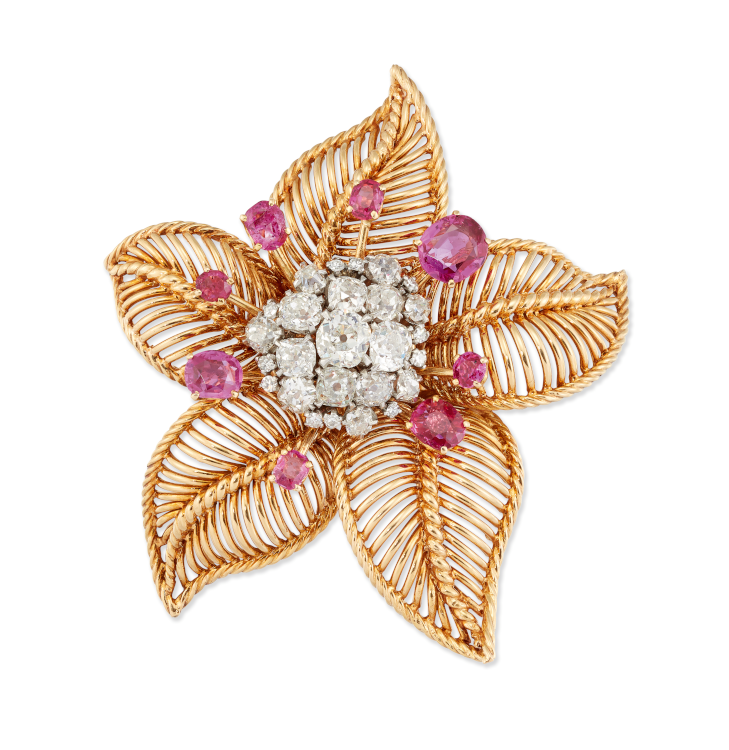
Championed by royalty
In the foreword to the book, David Armstrong-Jones, second earl of Snowdon, relates how his parents — Antony Armstrong-Jones, first earl of Snowdon, and Princess Margaret — supported and encouraged the creative jewelry designers and makers of the 1960s and ’70s. The list of designers the royals favored is extensive. Princess Margaret and the queen mother were patrons of Donald’s. A brooch by Grima is in the personal collection of Queen Elizabeth II, and Wingfield notes that she can be seen wearing it in her 2007 diamond wedding photographs with the duke of Edinburgh. When the personal jewelry collection of Princess Margaret came up for auction at Christie’s in June 2006, it included works by seven British independent jewelers and goldsmiths: Grima, Donald, Gard, Stuart Devlin and Michael Gosschalk — all mentioned in the book — as well as pieces by Leslie Durbin and Theo Fennell. In another strong royal connection, jeweler Louis Osman was commissioned in 1969 to make the crown that the Goldsmiths’ Company presented to Charles, prince of Wales, for his investiture. Other designers in the book include Frances Beck and Ernest Blyth, Gerald Benney, Ingeborg Bratman, Jocelyn Burton, Elizabeth Gage, David Morris, Wendy Ramshaw, Ben Rosenfeld, Tom Scott, George Weil, Alfred Gruber and his wife Jacqueline Stieger, Roger King and his father Roy King, and Joseph, Paul and Roger Kutchinsky.
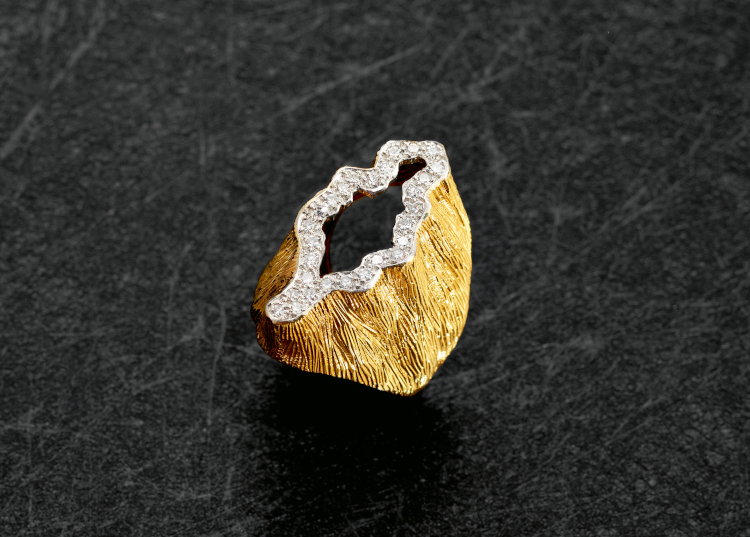
End of an era
Just as a trio of factors helped launch this creative period, another trio of factors helped close it. The price of gold had started to climb back up by 1968. In 1979, the price of silver rocketed from $6 per ounce to a high of $48.70 before collapsing in March 1980. And in 1981, Hughes resigned his position with the Goldsmiths’ Company, bookending what Wingfield describes as “a remarkable era in the promotion of modern jewelry and precious metal making.” Nonetheless, she concludes, the creative flowering that Hughes and his exhibition launched “would be remembered forever.”
Modern British Jewellery Designers 1960-1980: A Collector’s Guide by Mary Ann Wingfield was published in October by ACC Art Books.

Main image: Ben Rosenfeld fish brooch with circular-cut diamonds, a sapphire collar and turquoise cabochon eye in 18-karat gold, 1962. Photo: Jon Stokes.

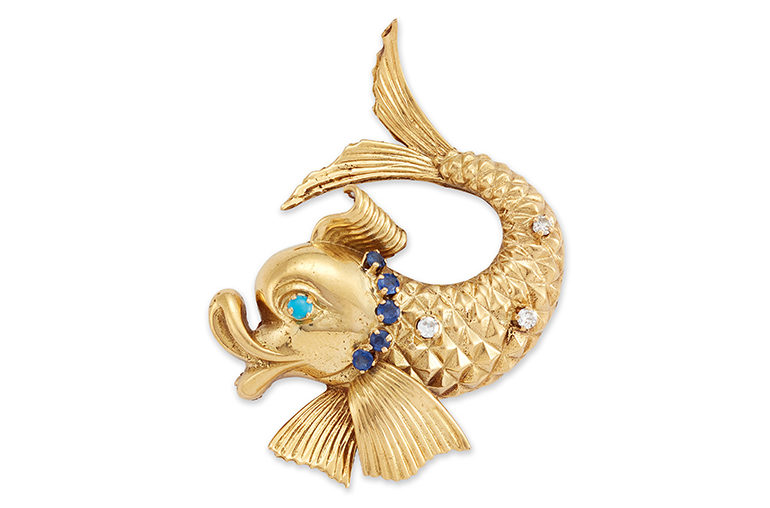
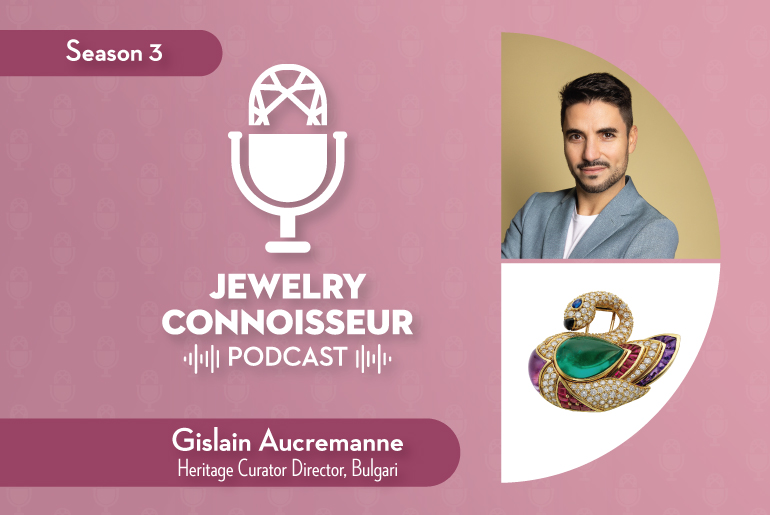
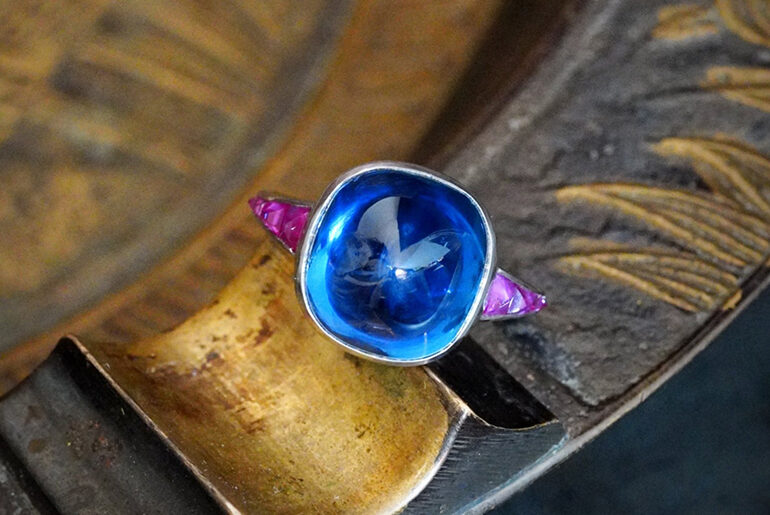
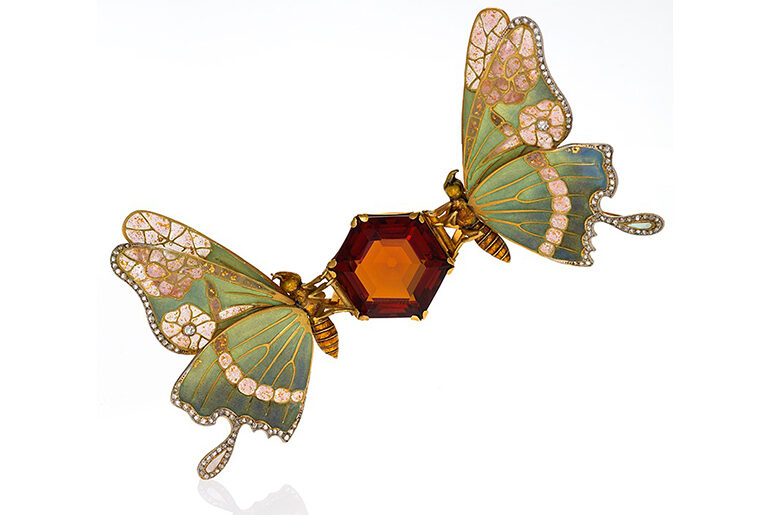
1 Comment
UwIcayDH